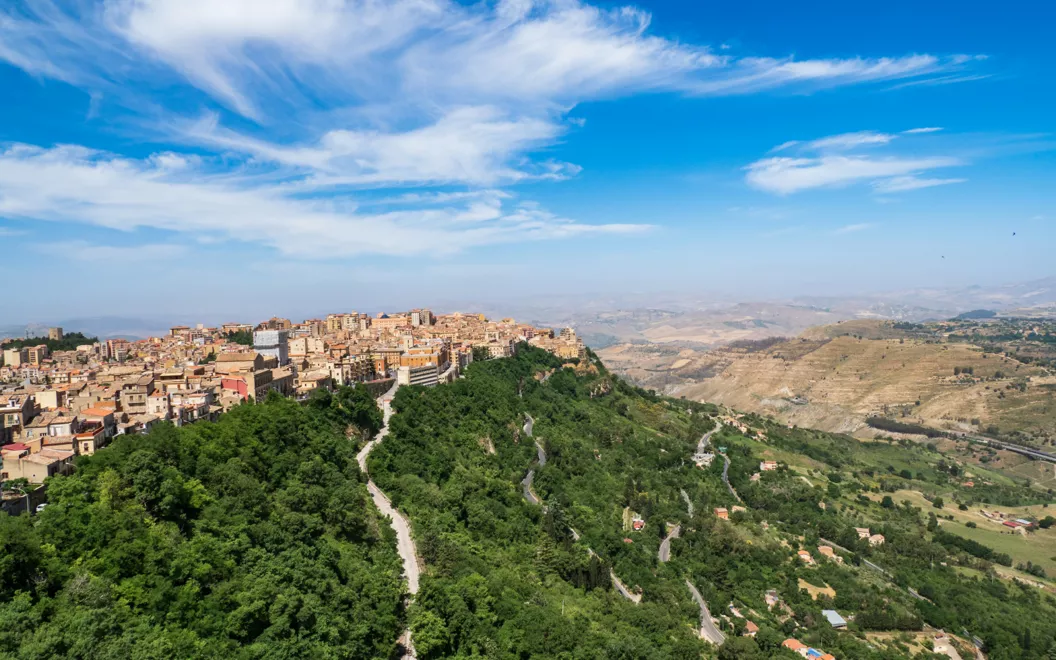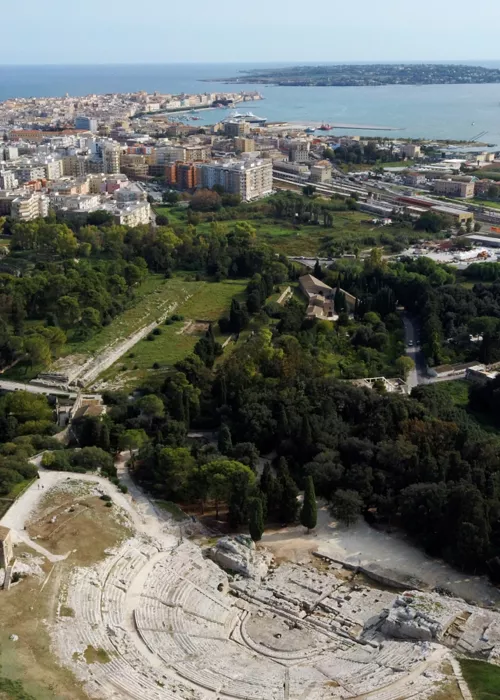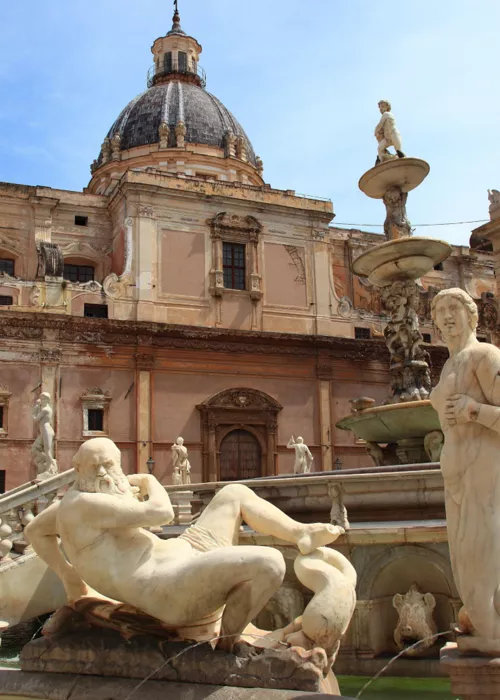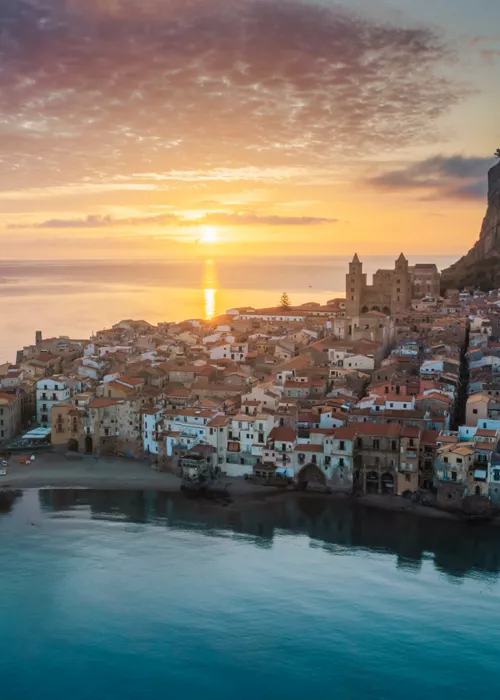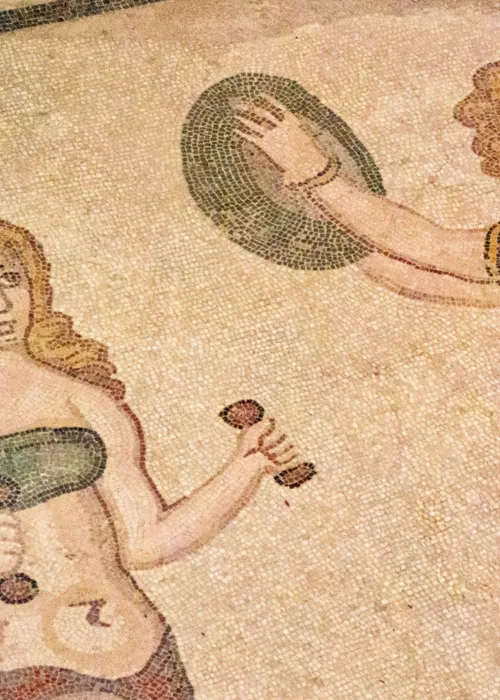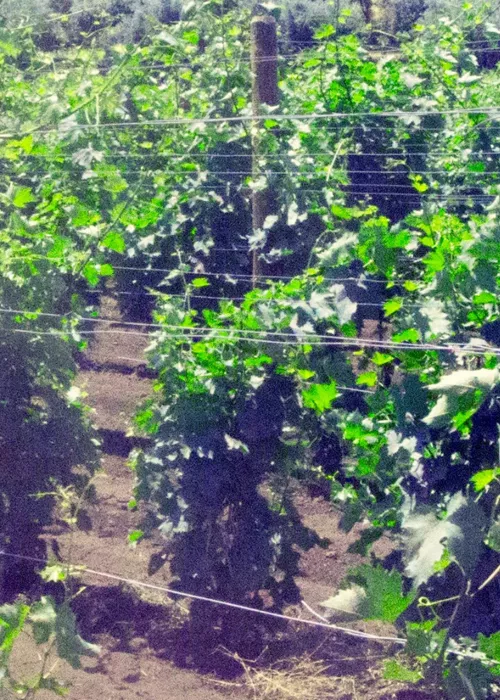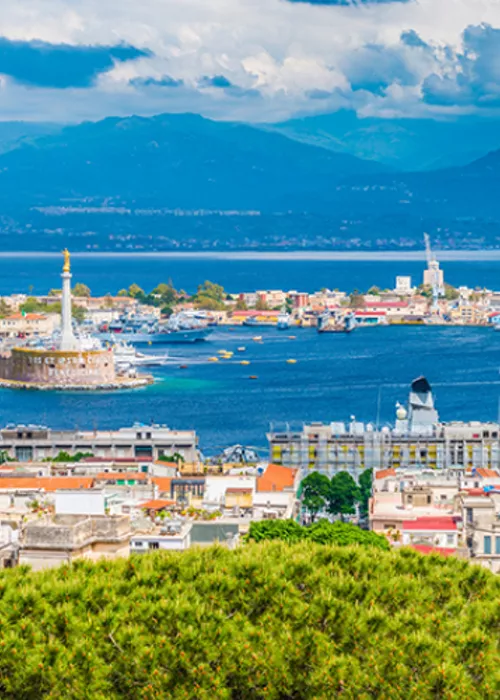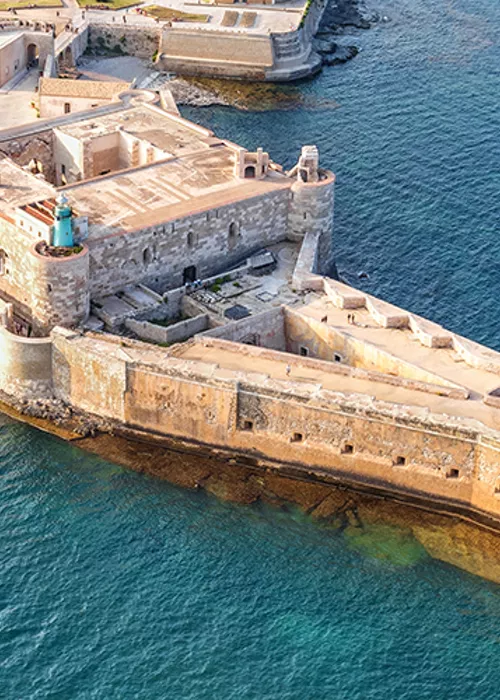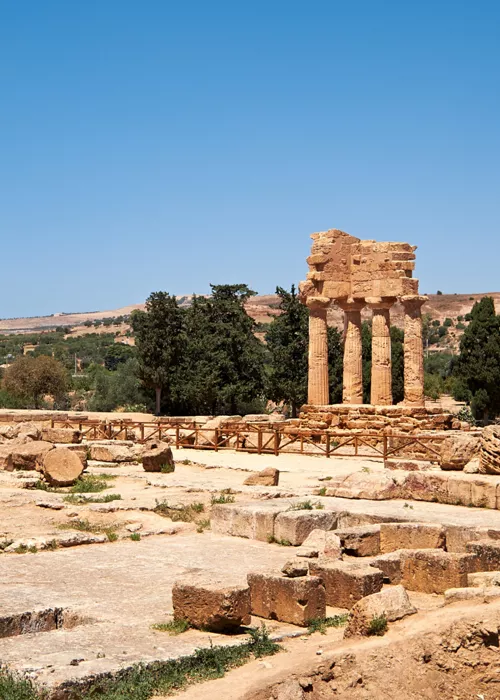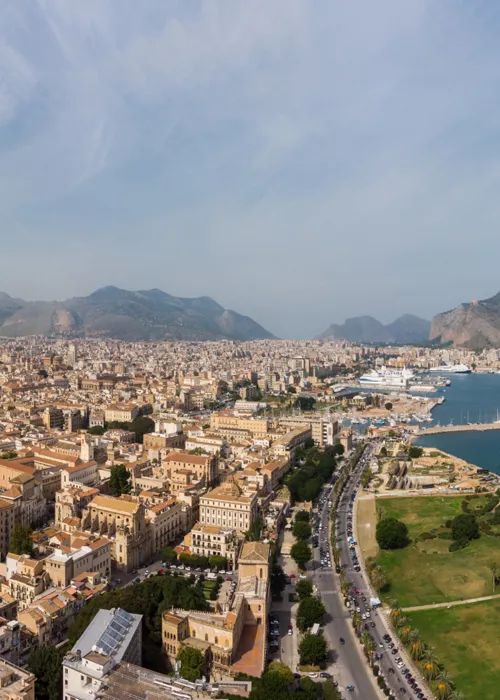Lombardy Castle

Walking around Enna, you often hear the Swabian king Frederick II mentioned. This is because of the Tower which was named after him, and also for the castle overlooking the city. It is certain that Frederick had the castle enlarged, expanding what had previously been an Arab fortification that had already been remodelled under the Normans.
You find yourself in an imposing mediaeval fortress, the kind where kids feel like playing armourers. While not intact, it is certainly not in ruins. It stands on the site once occupied by the acropolis of the ancient city, at the highest point of Italy's capital city. Going up the best-preserved tower, the panorama is 360 degrees, almost 1000 metres above sea level.
Emperor of the Holy Roman Empire from 1220 to 1250, Frederick was born in Italy and would die in Italy, leaving a myriad of architectural, political, scientific and cultural memories in the Peninsula that are truly incredible. In addition to some 20 castles, he is also credited with the University of Naples, the Sicilian School of Poetry and the Medical School of Salerno, the Constitution of Melfi, plus epic conflicts with the Papacy and a treaty on falconry. Frederick lived in southern Italy because he had been appointed king of Sicily even before becoming emperor: we will talk about this again when we come across his Tower here in the city.
Rocca di Cerere

At first glance, the fortress of Ceres simply looks like a fairytale cluster of rocks, slopes and glimpses on the same hill where the castle of Lombardy is located. But it is more than this: it is proof that during antiquity the hill had been the acropolis of the Sicilian and Greek "Henna", and then of the Roman "Castrum Hennæ". The fortress is, in fact, what remains of a sanctuary dedicated to Ceres, the Roman deity of fields, crops and of birth in general, which in ancient Greek mythology corresponded to the goddess Demeter.
The area of the sanctuary must have been wider: it probably also included the part of the hill where the castle now stands. However, the panorama is fantastic, up to the distant shape of Mount Etna, while the reference to classical mythology invites you to visit the Museum of Myth, a small but lively multimedia exhibition recently opened right next to the fortress, a short distance from the castle of Lombardy and the fortress itself.
The area dedicated to Ceres is also wider geographically, so much so that the Rocca di Cerere Geopark has been established, a protected area of almost 1,300 square kilometres equipped with visitor centres and exploratory itineraries. The Geopark concerns Enna and other municipalities, such as Aidone, Assoro, Calascibetta, Nissoria, Leonforte, Piazza Armerina, Valguarnera and Villarosa, and since 2015 it has been recognised by UNESCO as among the geographical areas of significance to humanity.
Cathedral

Entering the cathedral of Enna is inevitable when descending from the castle of Lombardy right along Via Lombardia. After the church of San Francesco di Paola, the street changes its name and becomes Via Roma: the axis of the city.
The encounter with the Duomo is a crucial moment when visiting any Italian historical centre. Here in Enna, the size of the building and the tower on the façade are striking, but the entire church is worthy of attention and what is impressive is the rich interior decoration, particularly the coffered ceiling along the nave.
The square next to the cathedral is named after Giuseppe Mazzini. Here, on the opposite side of the cathedral, you can take a step back in time by visiting the archaeological collections of the Regional Interdisciplinary Museum.
Via Roma continues meeting in the next square, on the side, the church of St Clare and then passing in front of the municipal theatre until it emerges in the large Piazza Vittorio Emanuele, next to the church of St Francis of Assisi.
Then, Via Roma catches you by surprise, suddenly taking a left and directing your visit to Enna southwards. After the collection in Piazza Neglia, you will arrive at the Tower of Frederick II.
Tower of Frederick II

This elegant building is also known as the Octagonal Tower, because of its floor plan based on the rose of the winds. It stands isolated on a hill in the countryside, in such a central position on the island that in the past it has been used as the geodetic reference point for all of Sicily.
The association with Frederick II is mainly based on the fact that the emperor and his court were known to be admirers of the octagon, also the shape of the outermost boundary wall, part of which still stands today. The tower is thought to have been designed by Riccardo da Lentini, the overseer of the royal building works and one of Frederick II's most prominent architects. It is certainly possible that the emperor himself stayed here during his time in Enna.
The building has two storeys, with pointed arched windows on the ground floor and architraves on the upper one. A spiral staircase built into the wall reaches to the top, offering views in every direction, from the Lombardy castle to the Cathedral , with Mount Etna in the background. All in all, this is a good place to view the city. Other vantage points worth considering are Porta di Janniscuru, a gateway that once formed part of the Norman walls but is tricky to reach because of the steep terraced alleyways leading from Via Mercato, or alternatively Lake Pergusa, the last leg on our itinerary, which is a bus or car ride away.
Pergusa Lake

The final stop on this small tour of Enna is a pleasant one: Lake Pergusa, which, just 14 kilometres from Enna, is practically the only true natural lake in Sicily, if you do not consider the few ponds with a humid coastal environment or salt lakes, such as those of the Vendicari Wildlife Oasis Orientated Nature Reserve. Here is another place where there is no shortage of legends: it seems that the portrait of Proserpina by Hades, the god of the Underworld (also nicknamed Pluto), took place right on the shores of this lake. It would also appear that, here too, Demeter orchestrated her rites of mourning and rebirth, covering the earth with new growth, as evidenced by the archaeological remains of the places of worship dedicated to the goddess of harvest and fertility and to her daughter.
But legends aside, this brackish lake, oval in shape and shallow, is striking on account of its location in a wide valley bordered by the verdant hill ridge. It is surrounded by a vegetation of reeds and eucalyptus trees that slope almost to its shore and is an important resting area for migratory birds, such as herons, grey herons, and black storks, but also for the moorhens, coots and seagulls that have found their natural habitat here. In fact, it is a place with a naturalistic significance of quite some value: so much so that, to preserve it from the problems caused by the automotive and cycling circuit (which runs right around its shores), the Lake Pergusa Nature Reserve was established in 1995. Not far from here, there is also the Floristella Grottacalda Mineral Park, one of the most significant industrial archaeology sites in Southern Italy: a very fascinating place.


